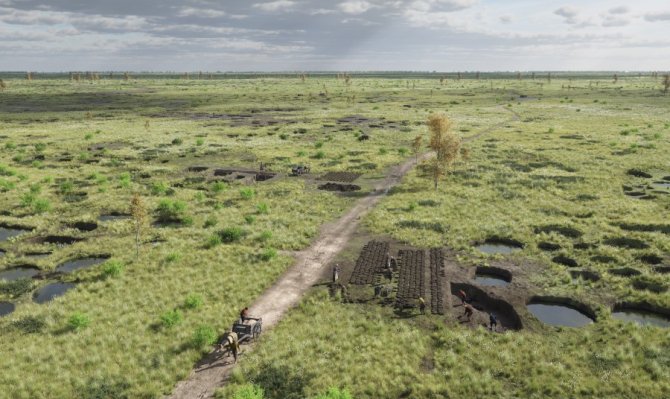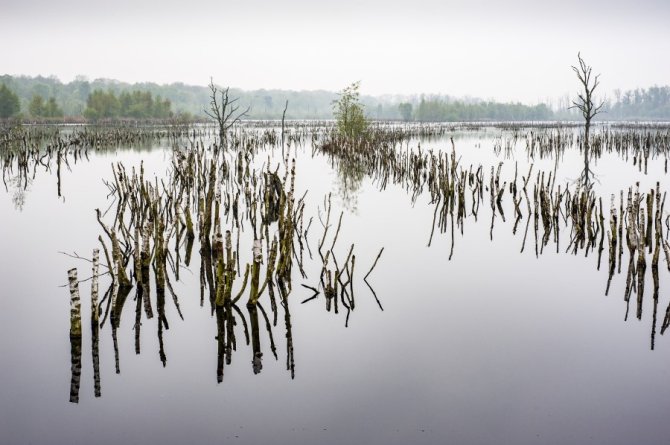News
Cultural history traces in bogs could favour nature restoration
Raised bogs are not a pristine wilderness but have been used in many ways in the past. Traces of past use forms in today's landscape could help achieve nature restoration goals. This conclusion was reached by Maurice Paulissen, a landscape historian who studied the long-term history of humans and raised bogs and obtained his PhD at Wageningen University & Research on 30 June.
Raised bogs are wetlands dominated by peat mosses. Bogs once covered large parts of north-western Europe, and the Netherlands in particular. At present, only a small fraction of their original area remains. The remaining bog areas, such as the Bargerveen in Drenthe and the Peel bogs on the border of North Brabant and Limburg, are designated Natura 2000 areas where much effort is being put into bog restoration. After all, rare animal and plant species thrive in raised bogs, and living bogs sequester carbon dioxide from the atmosphere in their peat layers. They also retain rainwater, thus dampening water discharge peaks.
Ditches, churches, peat mills and place names
Besides their value for nature, climate and water management, bogs have a long and eventful history of human use and meanings for people. In the past millennium, many raised bogs have changed dramatically or disappeared altogether due to reclamation for agriculture and especially large-scale peat extraction. This is a history that has left numerous traces in and around bog remnants. These include material remains such as churches for Catholic German peat workers in Drenthe, old peat factories, ditches for buckwheat cultivation and peat extraction pits in the bog. But they also include intangible traces such as many Dutch place names, from America to Zwartemeer. Interestingly, in particular in places where raised bogs have been most intensively used and ecologically degraded, a rich collection of cultural traces has remained in the landscape, even where the peat has disappeared altogether.

Cultural traces could potentially increase local support
According to Paulissen, who has a background in ecology, the insights gained from his research could benefit current nature management and bog restoration projects. "Within bog remnants, cultural remains such as old drainage ditches and peat pits are often the wet and sheltered places where new peat moss growth triggers the start of bog regeneration. But my claim is that cultural traces in and around bog remnants can also indirectly be of importance for nature restoration. Residents and the broader public around bog remnants often identify with these traces left by previous generations. Also, unlike in past times, residents have become distanced from the everyday management of 'their' bogs. Partly for these reasons, major bog restoration projects sometimes face resistance. I suggest placing the management of bog-related cultural remains in the hands of local residents if possible. Involve them more directly in the management of bog remnants. I expect this will increase support for large-scale bog restoration. In my research, I show how ecological and cultural-historical goals can go together in raised bog areas."
New perspectives on the history of bog uses and meanings
In his PhD research, part of the Home Turf project funded by the Dutch Research Council (NWO), Maurice Paulissen considers the history of human relationships with raised bogs in the Low Countries from new angles. He uses case studies from large (former) bog areas, such as the Bourtanger Moor, the Peel and the Belgian Hautes-Fagnes.
